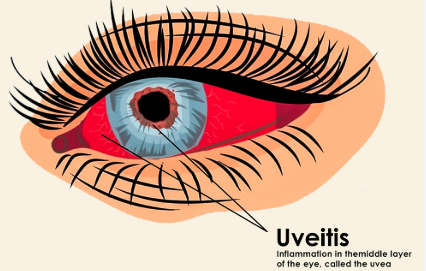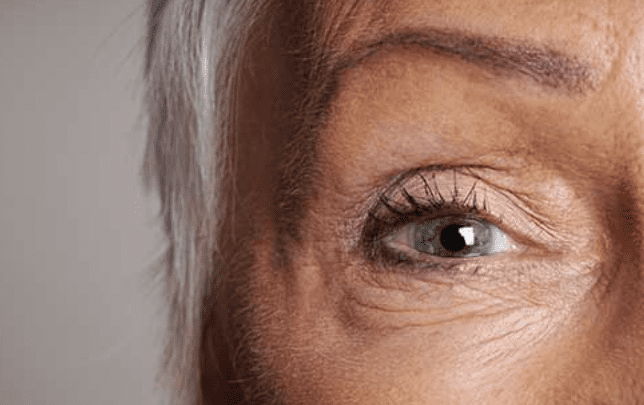Introduction
Fibromyalgia is a complex chronic condition that primarily affects the musculoskeletal system and nervous system, leading to widespread pain, fatigue, and cognitive dysfunction. However, fibromyalgia is also associated with a range of eye-related issues, including dry eyes, blurred vision, light sensitivity, and inflammation. One serious but often overlooked eye condition in fibromyalgia patients is uveitis (uvea inflammation).
Uveitis is an inflammatory condition that affects the uvea, the middle layer of the eye, which consists of the iris, ciliary body, and choroid. This condition can cause eye pain, redness, blurred vision, light sensitivity, and potential vision loss if left untreated. While fibromyalgia itself is not a direct cause of uveitis, it is commonly associated with immune system dysfunction and chronic inflammation, which may contribute to the development or worsening of uveitis symptoms.
Understanding the connection between fibromyalgia and uveitis is essential for early diagnosis, treatment, and prevention of vision complications.
1. What is Uveitis?
Uveitis is the inflammation of the uvea, the vascular layer of the eye responsible for supplying nutrients and oxygen to the retina. The inflammation can occur in one or both eyes and can be either acute (sudden onset) or chronic (long-term recurrence).
Types of Uveitis
✔ Anterior Uveitis (Iritis): Inflammation of the iris (colored part of the eye). It is the most common form of uveitis.
✔ Intermediate Uveitis (Cyclitis): Inflammation of the ciliary body, affecting the vitreous (gel-like substance inside the eye).
✔ Posterior Uveitis (Choroiditis): Inflammation of the choroid, which affects the retina and optic nerve, potentially leading to severe vision impairment.
✔ Panuveitis: Inflammation affecting all layers of the uvea, the most severe and vision-threatening form of uveitis.
2. How is Uveitis Linked to Fibromyalgia?
While fibromyalgia is not a direct cause of uveitis, several underlying factors associated with fibromyalgia may contribute to the development of uvea inflammation and eye complications.
2.1 Immune System Dysregulation
✔ Fibromyalgia is often linked to immune system abnormalities, making individuals more prone to inflammatory and autoimmune conditions.
✔ Autoimmune diseases such as lupus, rheumatoid arthritis, or Sjögren’s syndrome often overlap with fibromyalgia and increase the risk of uveitis.
2.2 Chronic Inflammation
✔ Fibromyalgia is characterized by widespread low-grade inflammation, which may contribute to ocular inflammation and uveitis development.
✔ Systemic inflammation can cause vascular changes in the uvea, triggering eye pain, redness, and sensitivity.
2.3 Nervous System Hypersensitivity
✔ Fibromyalgia patients often have heightened pain perception and nerve dysfunction, which can intensify eye pain and discomfort associated with uveitis.
✔ Photophobia (light sensitivity) is a common symptom of both fibromyalgia and uveitis, worsening vision-related discomfort.
2.4 Medication Side Effects
✔ Many medications used for fibromyalgia, such as steroids, antidepressants, and immunosuppressants, can affect eye health and contribute to ocular inflammation.
✔ Long-term corticosteroid use (for fibromyalgia-related inflammation or autoimmune disorders) may increase the risk of posterior uveitis.
3. Common Symptoms of Uveitis in Fibromyalgia
People with fibromyalgia may experience more pronounced and persistent uveitis symptoms due to immune dysfunction and nervous system hypersensitivity.
Key Symptoms of Uveitis Include:
✔ Eye redness and irritation (due to increased blood flow to inflamed uvea tissues).
✔ Severe eye pain (burning, stabbing, or aching pain).
✔ Blurred or hazy vision (due to inflammation affecting light refraction).
✔ Light sensitivity (photophobia), making it difficult to be in bright environments.
✔ Dark floating spots (floaters) in vision, caused by inflammatory debris in the vitreous.
✔ Increased tearing and watery eyes.
✔ Pressure in or around the eye.
✔ Reduced peripheral (side) vision or dimmed vision.
If left untreated, uveitis can lead to complications such as glaucoma, cataracts, retinal damage, and permanent vision loss.
4. How Uveitis Affects People with Fibromyalgia
4.1 Increased Pain and Discomfort
✔ Fibromyalgia patients experience increased pain sensitivity, making even mild uveitis symptoms feel more severe.
✔ Chronic eye inflammation may trigger headaches and neurological pain, adding to fibromyalgia-related fatigue and discomfort.
4.2 Worsening Fibro Fog and Cognitive Issues
✔ Blurry vision and light sensitivity can worsen fibro fog (brain fog, memory issues, and difficulty concentrating).
✔ Increased eye strain and fatigue can make it difficult to focus on reading, screens, or daily tasks.
4.3 Heightened Risk of Ocular Complications
✔ Fibromyalgia-related immune dysfunction and chronic inflammation can increase the risk of recurrent or severe uveitis episodes.
✔ Delayed healing in fibromyalgia may make recovery from uveitis slower and more difficult.
5. Managing and Treating Uveitis in Fibromyalgia
While uveitis can be serious, proper management can reduce inflammation, relieve pain, and protect vision.
5.1 Medical Treatment Options
✔ Corticosteroid eye drops – To reduce inflammation and pain.
✔ Dilating eye drops – To prevent muscle spasms and relieve light sensitivity.
✔ Oral steroids or immunosuppressants – For severe or chronic cases.
✔ Antiviral or antibiotic treatment – If an infection is causing uveitis.
5.2 Protect Your Eyes from Irritants and Bright Light
✔ Wear UV-blocking sunglasses to reduce photophobia and protect against light-induced discomfort.
✔ Avoid dust, smoke, and allergens that can worsen eye inflammation.
✔ Use a humidifier to prevent eye dryness and irritation.
5.3 Maintain Eye Hygiene and Prevent Infections
✔ Wash hands regularly to avoid eye infections.
✔ Avoid rubbing or touching the eyes, as this can worsen irritation.
✔ Use preservative-free artificial tears to keep eyes moisturized.
5.4 Reduce Systemic Inflammation and Strengthen the Immune System
✔ Eat anti-inflammatory foods, such as salmon, turmeric, berries, and leafy greens.
✔ Take omega-3 fatty acids, vitamin D, and magnesium supplements to support eye and nervous system health.
✔ Stay hydrated to maintain tear production and eye lubrication.
5.5 Manage Fibromyalgia Symptoms
✔ Improve sleep quality to enhance immune function and reduce inflammation.
✔ Reduce stress and pain through yoga, meditation, and breathing exercises.
✔ Engage in gentle movement exercises (like tai chi) to promote circulation and eye health.
6. When to Seek Medical Attention
Seek an eye doctor immediately if you experience:
✔ Severe eye pain that does not improve.
✔ Sudden vision loss or extreme blurriness.
✔ Flashing lights, dark spots, or floaters in vision.
✔ Significant redness and swelling in one or both eyes.
✔ Sensitivity to light that worsens suddenly.
Uveitis requires early diagnosis and treatment to prevent serious complications like glaucoma, cataracts, or permanent vision loss.
Conclusion: Protecting Eye Health in Fibromyalgia
Uveitis symptoms in fibromyalgia can be painful and vision-threatening, but early detection, treatment, and lifestyle changes can help reduce inflammation and protect long-term eye health. By managing fibromyalgia holistically and taking proactive eye care measures, patients can minimize discomfort and maintain visual function.
Would you like additional natural remedies or eye care tips for fibromyalgia-related inflammation?

Click Here to Visit the Store and find Much More….
For More Information Related to Fibromyalgia Visit below sites:
References:
Fibromyalgia Contact Us Directly
Click here to Contact us Directly on Inbox
Official Fibromyalgia Blogs
Click here to Get the latest Chronic illness Updates
Fibromyalgia Stores





